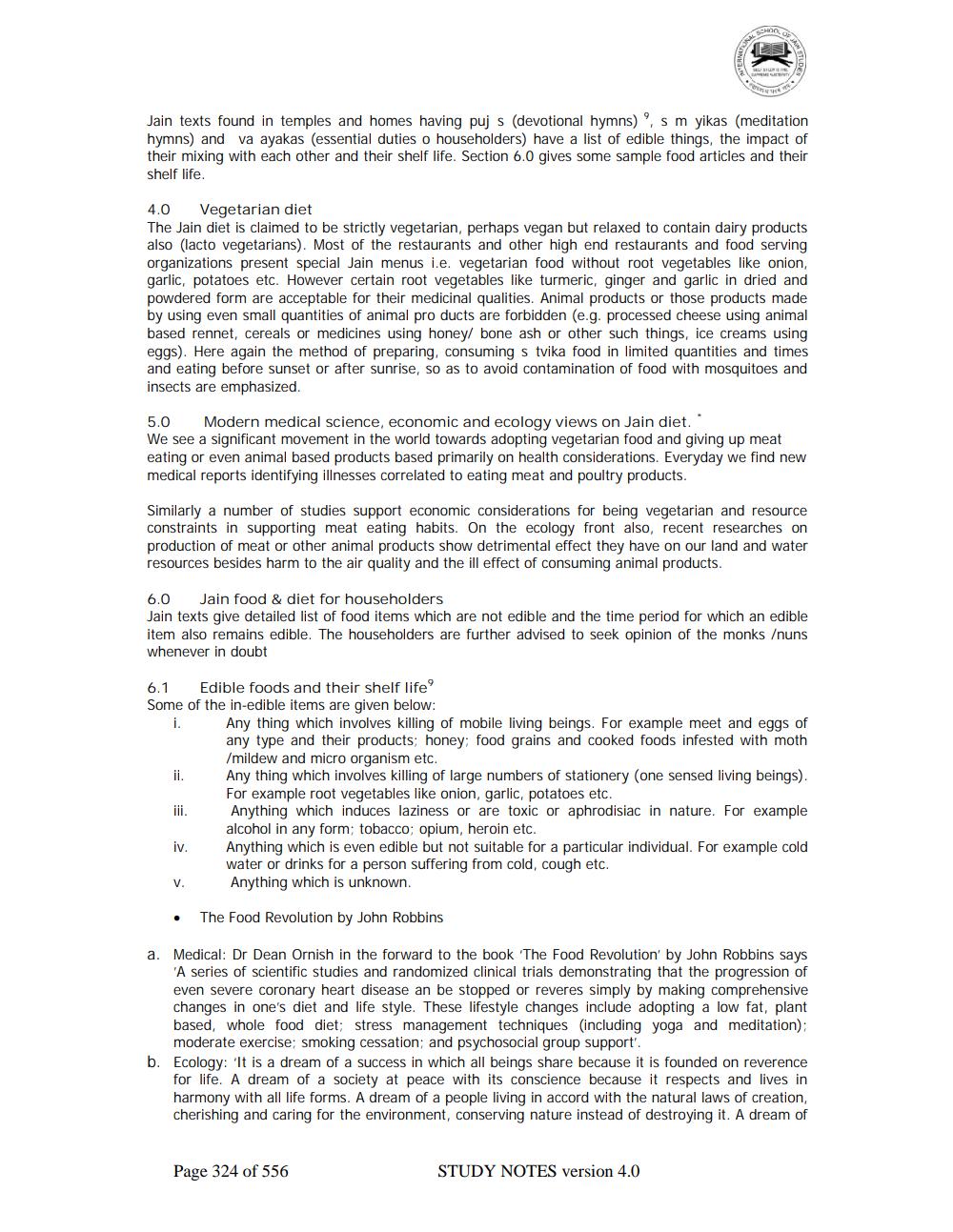________________
Jain texts found in temples and homes having puj s (devotional hymns), s m yikas (meditation hymns) and va ayakas (essential duties o householders) have a list of edible things, the impact of their mixing with each other and their shelf life. Section 6.0 gives some sample food articles and their shelf life.
4.0
Vegetarian diet
The Jain diet is claimed to be strictly vegetarian, perhaps vegan but relaxed to contain dairy products also (lacto vegetarians). Most of the restaurants and other high end restaurants and food serving organizations present special Jain menus i.e. vegetarian food without root vegetables like onion, garlic, potatoes etc. However certain root vegetables like turmeric, ginger and garlic in dried and powdered form are acceptable for their medicinal qualities. Animal products or those products made by using even small quantities of animal pro ducts are forbidden (e.g. processed cheese using animal based rennet, cereals or medicines using honey/ bone ash or other such things, ice creams using eggs). Here again the method of preparing, consuming s tvika food in limited quantities and times and eating before sunset or after sunrise, so as to avoid contamination of food with mosquitoes and insects are emphasized.
5.0
Modern medical science, economic and ecology views on Jain diet. We see a significant movement in the world towards adopting vegetarian food and giving up meat eating or even animal based products based primarily on health considerations. Everyday we find new medical reports identifying illnesses correlated to eating meat and poultry products.
Similarly a number of studies support economic considerations for being vegetarian and resource constraints in supporting meat eating habits. On the ecology front also, recent researches on production of meat or other animal products show detrimental effect they have on our land and water resources besides harm to the air quality and the ill effect of consuming animal products.
6.0
Jain food & diet for householders
Jain texts give detailed list of food items which are not edible and the time period for which an edible item also remains edible. The householders are further advised to seek opinion of the monks /nuns whenever in doubt
Edible foods and their shelf life?
6.1 Some of the in-edible items are given below:
i.
ii.
Any thing which involves killing of large numbers of stationery (one sensed living beings). For example root vegetables like onion, garlic, potatoes etc.
Anything which induces laziness or are toxic or aphrodisiac in nature. For example alcohol in any form; tobacco; opium, heroin etc.
Anything which is even edible but not suitable for a particular individual. For example cold water or drinks for a person suffering from cold, cough etc. Anything which is unknown.
The Food Revolution by John Robbins
a. Medical: Dr Dean Ornish in the forward to the book 'The Food Revolution' by John Robbins says 'A series of scientific studies and randomized clinical trials demonstrating that the progression of even severe coronary heart disease an be stopped or reveres simply by making comprehensive changes in one's diet and life style. These lifestyle changes include adopting a low fat, plant based, whole food diet; stress management techniques (including yoga and meditation); moderate exercise; smoking cessation; and psychosocial group support'.
iii.
iv.
Any thing which involves killing of mobile living beings. For example meet and eggs of any type and their products; honey; food grains and cooked foods infested with moth /mildew and micro organism etc.
V.
b. Ecology: 'It is a dream of a success in which all beings share because it is founded on reverence for life. A dream of a society at peace with its conscience because it respects and lives in harmony with all life forms. A dream of a people living in accord with the natural laws of creation, cherishing and caring for the environment, conserving nature instead of destroying it. A dream of
Page 324 of 556
STUDY NOTES version 4.0




